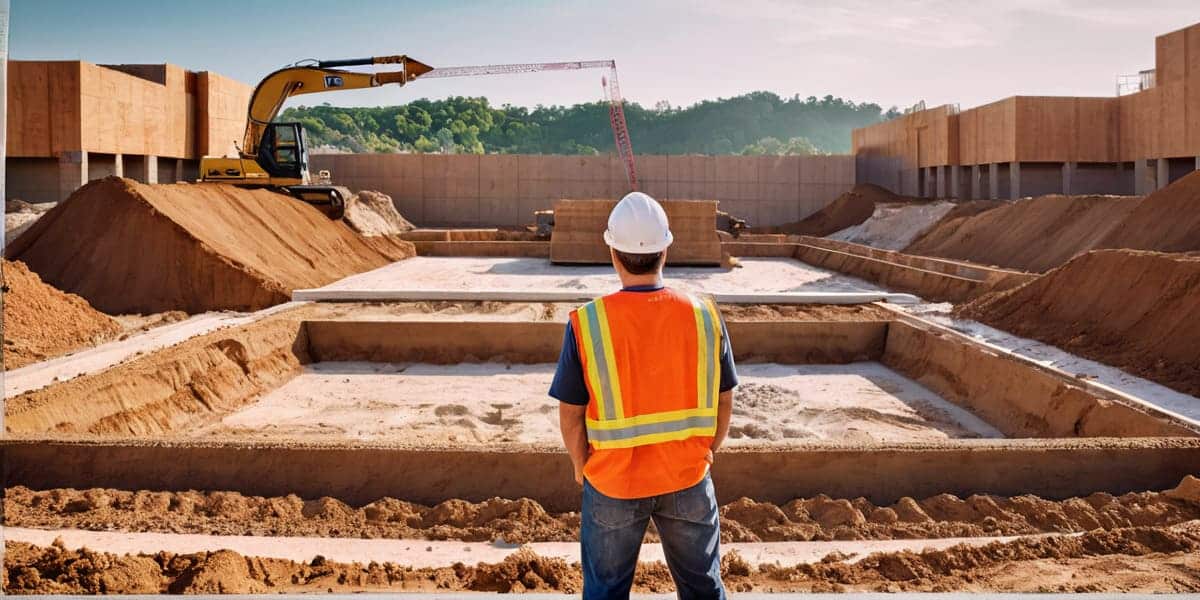 Adhering to Safety and Compliance Measures in Construction Projects
Adhering to Safety and Compliance Measures in Construction Projects

The Imperative of Construction Safety Compliance
Safety compliance in the construction industry is not merely a recommendation; it is an absolute requirement. The laws governing construction safety and compliance are stringent, with agencies like the Occupational Safety and Health Administration (OSHA) setting the bar for enforceable standards. These regulations are designed to minimise risks and ensure that every construction site is as safe as possible for all workers involved.
Legal Enforcement of Safety Standards
Current laws enforce construction safety through a framework of regulations that construction companies must adhere to. Failure to comply can result in severe penalties, including fines, stop-work orders, and even criminal charges in cases of gross negligence. These laws are not static; they evolve to adapt to new safety research and technological advancements, ensuring that safety protocols remain effective and relevant.
Consequences of Non-Compliance
Ignoring safety protocols can lead to real-world consequences that extend far beyond legal penalties. Accidents on construction sites can result in serious injuries or fatalities, which have profound impacts on the lives of workers and their families. Moreover, incidents can disrupt project timelines, inflate costs, and damage the reputations of the companies involved.
Intersection with Legal and Ethical Responsibilities
Safety compliance is at the intersection of legal obligations and ethical responsibilities. It is a reflection of a company’s commitment to its workforce’s well-being and a measure of its integrity within the industry. Ethical practices in safety compliance contribute to a company’s standing as a responsible and trustworthy entity.
Protecting Reputation and Financial Health
Adherence to safety measures is crucial for protecting a company’s reputation and financial health. A strong safety record can enhance a company’s image, making it more attractive to clients and potential employees. Conversely, a history of safety violations can tarnish a brand and lead to increased insurance premiums, legal costs, and lost business opportunities. In essence, investing in safety compliance is investing in the company’s future stability and success.

The Evolution of Construction Safety Standards
Understanding the progression of construction safety standards is crucial for your compliance and the well-being of your workforce. Over the years, pivotal incidents have acted as catalysts for change, leading to the stringent regulations we see today.
Historical Catalysts for Safety Regulations
- Tragic Milestones: Past catastrophes, such as the collapse of the Pemberton Mill in 1860 and the Hawk’s Nest Tunnel disaster in the 1930s, have underscored the need for robust safety protocols.
- Legislative Responses: These events prompted legislative action, resulting in foundational laws like the UK’s Factory Act of 1833 and the establishment of OSHA in the United States in 1970.
Advancements in Safety Measures
- Incremental Improvements: Construction safety standards have evolved from basic protective measures to comprehensive systems encompassing risk assessment, worker training, and emergency response.
- Integration of Best Practices: The adoption of international standards, such as those from ISO, has harmonised safety practices across borders.
Technology’s Role in Safety Enhancement
- Digital Leap: The integration of technology, including real-time monitoring and automation, has significantly advanced safety measures, allowing for more precise risk management and predictive analysis.
Predicting the Future of Safety Compliance
- Trend Analysis: Current trends, such as the increasing use of wearable technology and AI, suggest a future where safety compliance is closely interwoven with technological innovation, leading to even safer construction environments.
By reflecting on the past and embracing the present technological advancements, you can anticipate and adapt to the future of safety compliance, ensuring that your construction projects not only meet but exceed current safety standards.
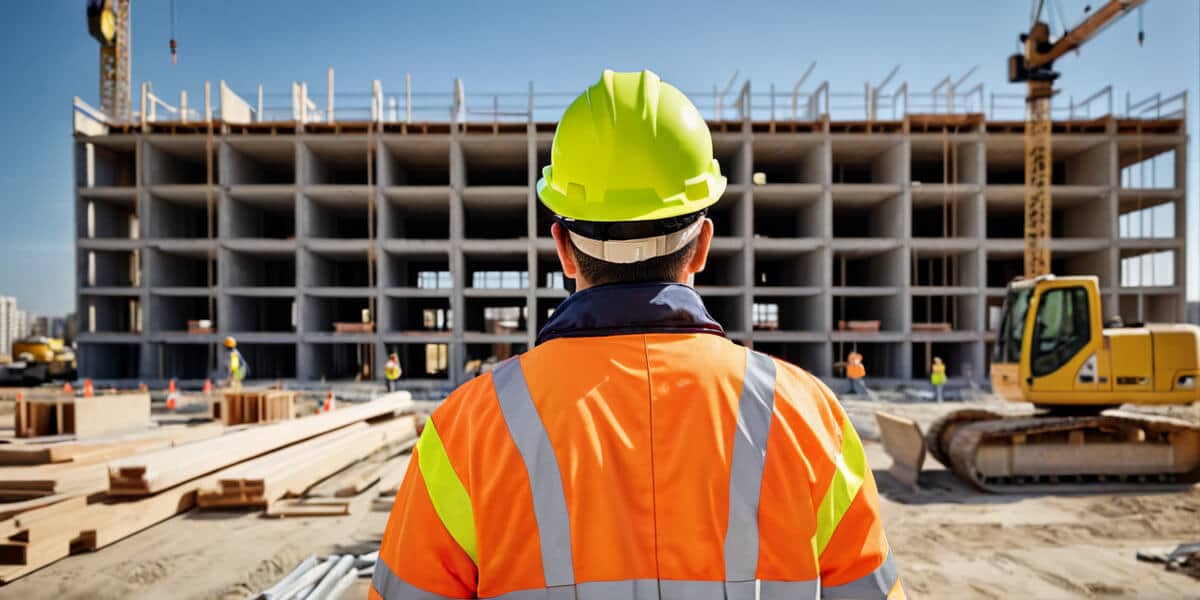
Identifying and Mitigating Risks Proactively
In the construction industry, risk management is not just a regulatory requirement; it’s a strategic imperative. Understanding the common risks and proactively addressing them can significantly enhance project outcomes and worker safety.
Common Risks in Construction Projects
- Physical Hazards: These include the risk of falls, electrocution, and being struck by objects, which are among OSHA’s “Fatal Four.”
- Environmental Factors: Exposure to harmful substances and extreme weather conditions also pose significant risks.
Proactive Identification of Safety Hazards
- Risk Assessments: Regular, thorough risk assessments are essential. They help you identify potential hazards before they become incidents.
- Worker Input: Engaging with your workforce can provide valuable insights into everyday risks that might not be immediately obvious.
Strategies for Risk Mitigation
- Safety Protocols: Establishing and enforcing clear safety protocols is crucial for mitigating risks.
- Technology Utilisation: Implementing real-time monitoring and predictive tools can help anticipate and prevent hazardous situations.
Benefits of a Proactive Safety Approach
- Project Efficiency: A safe site is an efficient site. By minimising the risk of accidents, you maintain project timelines and reduce costly disruptions.
- Reputation Management: Demonstrating a commitment to safety can enhance your reputation, making you a contractor of choice for future projects.
By taking a proactive stance on safety, you not only ensure compliance but also contribute to a culture of safety that permeates every level of your organisation.
Training as the Backbone of Safety Culture
In the realm of construction, the significance of a robust safety culture cannot be overstated, and at its core lies comprehensive training. Training is the critical element that empowers employees to understand, respect, and adhere to safety standards, ensuring that compliance is not just a regulation but a cornerstone of daily operations.
Essential Elements of Safety Training
- Comprehensiveness: Training programmes must cover all aspects of safety, from the use of personal protective equipment (PPE) to emergency response procedures.
- Hazard-Specific Information: Workers should receive training tailored to the specific hazards of their job site and tasks.
Ensuring Effective and Ongoing Training
- Regular Updates: Safety training must be an ongoing process, with regular updates to accommodate new regulations and emerging best practices.
- Competency-Based Approach: Training should be competency-based, ensuring that workers not only receive information but also demonstrate their understanding and ability to apply safety practices.
Innovative Training Methods
- Interactive Technologies: The use of virtual reality (VR) and augmented reality (AR) in training provides immersive experiences that enhance learning and retention.
- Language Accessibility: Offering training in multiple languages ensures that all workers have access to critical safety information.
By prioritising training, construction companies can foster a safety culture that not only complies with regulations but also actively protects workers, thereby enhancing overall project success.

The Role of Leadership in Enforcing Compliance
Leadership is the cornerstone of any successful safety programme in the construction industry. The attitudes and actions of those at the helm not only set the tone for an organisation’s safety culture but also determine the effectiveness of its compliance measures.
Influencing Safety Culture Through Leadership
- Tone at the Top: Leaders set the standard for safety priorities; their commitment is often mirrored by employees at all levels.
- Visible Engagement: Regularly participating in safety training and acknowledging safe practices reinforces the importance of compliance.
Leaders’ Responsibilities in Safety Enforcement
- Policy Implementation: Leaders are responsible for implementing safety policies that meet or exceed regulatory standards.
- Resource Allocation: Ensuring that adequate resources are available for safety measures is a key leadership duty.
Modelling and Promoting Safety Compliance
- Leading by Example: Leaders should model the behaviour they expect from their teams, such as wearing PPE and adhering to safety protocols.
- Recognition Programmes: Instituting recognition programmes can motivate employees to follow safety guidelines diligently.
Consequences of Leadership Failure in Safety
- Increased Incidents: A lack of leadership in safety can lead to higher rates of workplace accidents and injuries.
- Legal and Financial Repercussions: Failure to enforce compliance can result in legal penalties and financial losses due to workplace disruptions.
Leaders in construction must actively enforce and model safety compliance to maintain a safe work environment and uphold the company’s reputation and financial stability.
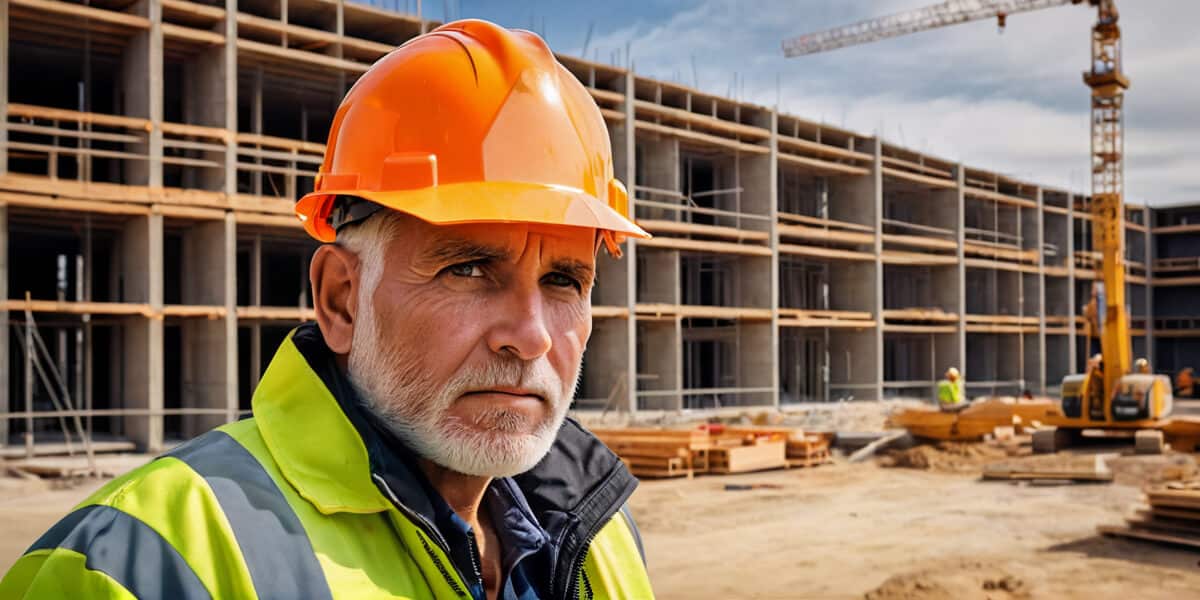
Technology: A Game-Changer in Safety Management
The construction industry is witnessing a technological revolution that is transforming safety management. From wearable devices to advanced software, technology is providing new avenues to enhance safety and ensure compliance.
Technological Tools Revolutionising Construction Safety
- Real-Time Monitoring: Wearable tech and sensors offer real-time monitoring of worker vitals and environmental conditions.
- Automation: Automated equipment can perform high-risk tasks, reducing human exposure to danger.
Enhancing Compliance Monitoring and Enforcement
- Data Analysis: Software for data analysis helps in tracking compliance and identifying trends that may indicate potential safety issues.
- Predictive Tools: AI and machine learning can predict and prevent incidents by analysing historical data and current conditions.
Challenges and Limitations of Safety Technology
- Integration: Seamlessly integrating new technologies with existing systems can be challenging.
- Training: Ensuring that all employees are adequately trained to use new technologies is essential but can be resource-intensive.
Integrating New Technologies with Existing Protocols
- Phased Implementation: Introduce new technologies in phases to allow for adjustment without disrupting current safety measures.
- Stakeholder Coordination: Engage with all stakeholders, including workers and management, to ensure smooth technology adoption.
By thoughtfully integrating cutting-edge technologies into safety management, construction companies can significantly improve compliance and create a safer work environment.
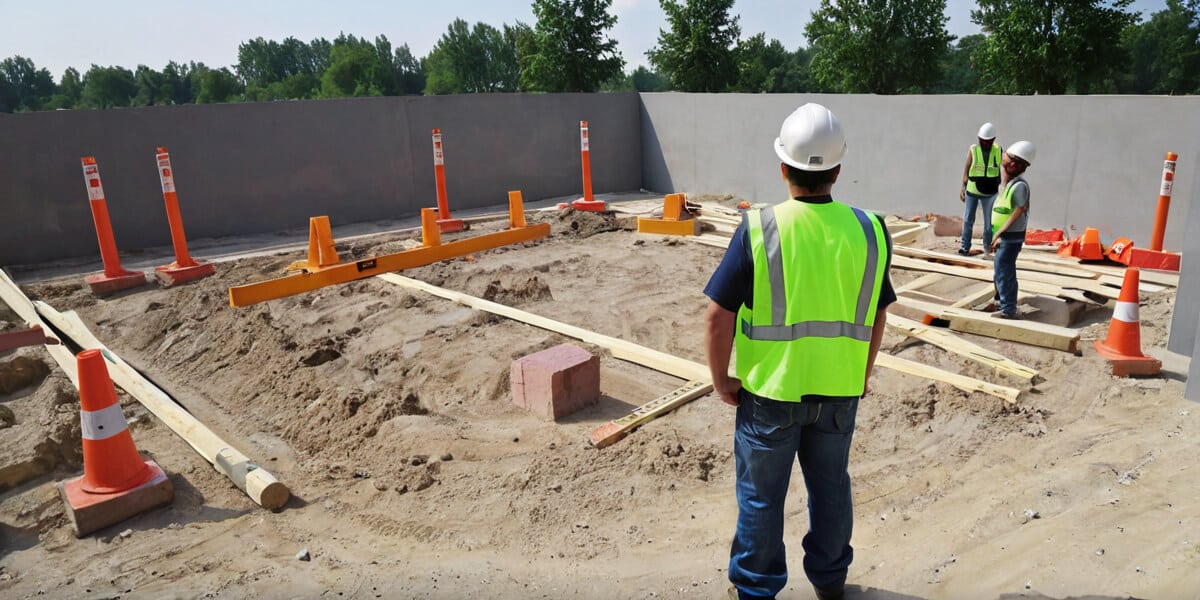
Communication: The Lifeline of Safety Compliance
Effective communication is pivotal in maintaining a safe construction site. It ensures that safety protocols are not only disseminated but also understood and implemented by every team member. Clear communication channels contribute significantly to the prevention of accidents and efficient management of emergency situations.
Strategies for Clear Safety Communication
- Regular Briefings: Hold daily safety briefings to discuss the day’s tasks and associated risks.
- Visual Aids: Use signs, symbols, and colour codes to communicate important safety information quickly and across language barriers.
Fostering an Open Safety Dialogue
- Feedback Systems: Implement systems that encourage workers to report hazards or suggest safety improvements without fear of retaliation.
- Safety Committees: Establish safety committees that include workers from various levels to discuss safety issues and develop solutions collaboratively.
Communication’s Role in Emergency Response
- Preparedness Training: Conduct regular drills that include communication protocols to ensure everyone knows their role during an emergency.
- Incident Reporting: Maintain clear procedures for reporting accidents, which are crucial for rapid response and future prevention strategies.
By prioritising effective communication, construction companies can create an environment where safety is a shared responsibility, and every worker feels empowered to contribute to a safer worksite.
Navigating the Complexities of Safety Regulations
The landscape of safety regulations in construction is intricate and ever-evolving, presenting a significant challenge for companies striving to maintain compliance. Understanding and applying these regulations requires a diligent and informed approach.
Understanding and Applying Safety Regulations
- Complexity: The detailed nature of safety regulations can be daunting, with various standards applicable to different aspects of construction work.
- Variability: Regulations may vary by location, project type, and even the specific phase of construction, necessitating a tailored approach to compliance.
Staying Current with Safety Codes
- Continuous Learning: Companies must commit to ongoing education to keep abreast of the latest safety codes and industry standards.
- Professional Development: Encouraging employees to participate in workshops and seminars can help maintain a knowledgeable workforce.
Resources for Regulatory Compliance
- Industry Associations: Organisations such as the National Safety Council provide guidance and resources to help companies navigate safety regulations.
- Government Agencies: Bodies like OSHA offer extensive materials and training programmes designed to assist with compliance.
Simplifying Compliance for the Workforce
- Clear Communication: Simplifying the language of compliance materials can make regulations more accessible to employees and subcontractors.
- Practical Tools: Checklists and mobile apps can provide on-the-go references to ensure safety measures are understood and implemented consistently.
By systematically addressing the complexities of safety regulations, companies can ensure that their compliance efforts are both effective and efficient, safeguarding their workforce and their business.

Audits and Inspections: Ensuring Ongoing Compliance
Regular audits and inspections are the linchpins of a robust safety compliance programme in the construction industry. They serve as both a checkpoint and a catalyst for continuous improvement in safety practices.
Best Practices for Effective Audits and Inspections
- Scheduled Regularity: Establish a routine schedule for audits to ensure ongoing compliance and to identify potential issues before they escalate.
- Comprehensive Checklists: Utilise detailed checklists that align with OSHA standards and other regulatory requirements to guide the inspection process.
Utilising Audit Findings to Enhance Safety
- Actionable Insights: Translate audit findings into actionable steps to address deficiencies and reinforce safety measures.
- Feedback Loop: Create a system for feedback and follow-up to ensure that corrective actions are implemented and effective.
Streamlining the Audit Process
- Digital Documentation: Implement digital record-keeping for efficient tracking of audits, inspections, and follow-up actions.
- Employee Involvement: Engage employees in the audit process to foster a culture of safety and shared responsibility.
By adhering to these practices, construction companies can ensure that their safety protocols are not only compliant with current regulations but are also consistently updated to reflect best practices, thereby safeguarding their workforce and their operations.
Creating a Responsive Safety Incident Protocol
When a safety incident occurs, the response must be swift and organised. An effective incident response plan is a critical component of your safety programme, ensuring that every team member knows their role and how to act to mitigate the impact of the incident.
Key Components of an Incident Response Plan
- Clear Roles and Responsibilities: Define who is in charge and what each team member’s responsibilities are in the event of an incident.
- Communication Channels: Establish and maintain clear communication channels for reporting incidents and coordinating a response.
Ensuring a Swift and Organised Response
- Emergency Contact Lists: Keep an updated list of emergency contacts, including first responders and company safety officers.
- Accessibility: Ensure that response plans are easily accessible to all employees, not just locked away in a manager’s office.
Training for Effective Incident Execution
- Regular Drills: Conduct regular emergency response drills to ensure employees are familiar with the incident response plan.
- Feedback Mechanisms: After drills or actual incidents, gather feedback to improve the response plan.
Integrating Lessons Learned into Safety Planning
- Incident Reviews: Hold post-incident reviews to identify what worked well and what needs improvement.
- Continuous Improvement: Update training and response plans regularly to incorporate new insights and best practices.
By methodically developing and practising a responsive safety incident protocol, you can ensure that your team is prepared to handle emergencies effectively, minimising risk to personnel and project continuity.
Measuring Safety Performance and Compliance
Evaluating safety performance and compliance is a dynamic process that requires a multifaceted approach. By establishing clear metrics and utilising data analysis, construction companies can ensure continuous improvement in their safety programmes.
Key Metrics for Assessing Safety Performance
- Incident Rates: Track the frequency of accidents and near-misses to gauge the effectiveness of safety measures.
- Compliance Scores: Use audits to score adherence to safety protocols and identify areas for improvement.
Tracking and Measuring Compliance
- Regular Audits: Conduct periodic safety audits and use the findings to measure compliance against established benchmarks.
- Employee Feedback: Incorporate feedback from workers as a qualitative measure of the safety culture’s strength.
The Role of Data Analysis in Safety Outcomes
- Trend Identification: Analyse safety data over time to identify patterns and predict potential risks.
- Benchmarking: Compare performance against industry standards to determine where your company stands.
Embedding Continuous Improvement
- Action Plans: Develop action plans based on audit results and track the implementation of corrective measures.
- Training Efficacy: Evaluate the impact of safety training on performance metrics to refine educational programmes.
By systematically measuring and analysing safety performance, you can embed a culture of continuous improvement, ensuring that your construction projects not only meet but exceed safety and compliance standards.
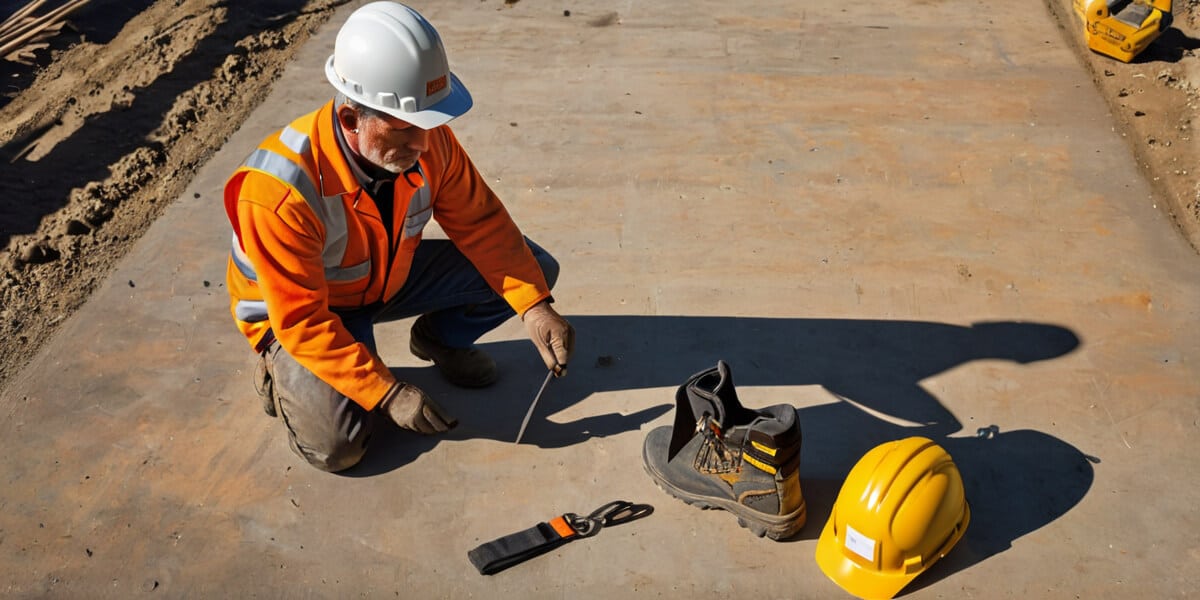
Elevating Safety Standards in the Construction Industry
The construction industry faces the ongoing challenge of elevating safety standards while maintaining productivity and profitability. Collective action and a commitment to continuous improvement are essential for building a safer future.
Collaborative Efforts for Higher Safety Standards
- Industry Associations: Engage with industry associations to share knowledge and develop unified safety protocols.
- Best Practice Sharing: Encourage the sharing of best practices and lessons learned from safety incidents across the industry.
Balancing Safety with Operational Goals
- Integrated Planning: Incorporate safety planning into the earliest stages of project development to align safety with productivity goals.
- Cost-Benefit Analysis: Recognise that investing in safety can lead to cost savings by reducing accidents and improving efficiency.
Steps Toward a Safer Tomorrow
- Proactive Measures: Implement proactive measures, such as hazard-specific training and comprehensive risk assessments, to prevent incidents before they occur.
- Technology Adoption: Embrace technology, like real-time monitoring and predictive analytics, to enhance safety measures and compliance.
By taking these steps, construction companies can ensure that safety and compliance are not just regulatory requirements but integral components of their business strategy, leading to a safer and more sustainable industry.

